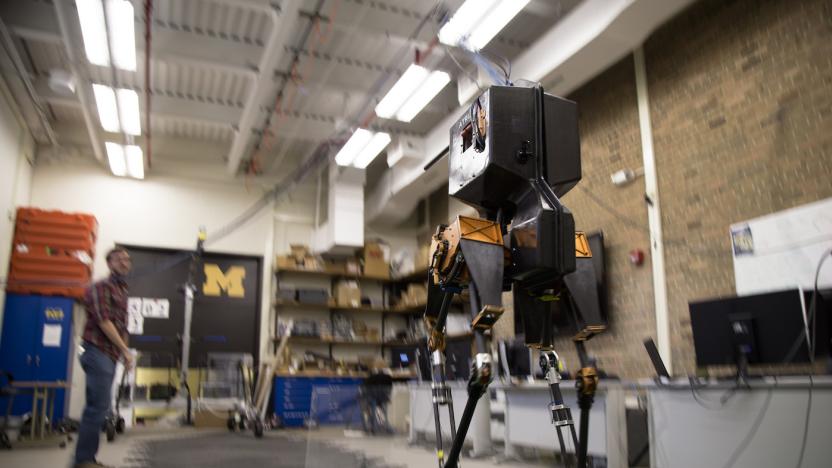jonathanhurst
Latest

U of M's Marlo robot uses algorithms to conquer uneven terrain
Robots walking unaided on flat ground is tough enough as it is -- just look at last year's class of DARPA Challenge failures -- so when one can handle uneven terrain in any direction (not just a straight line), we take notice. The latest example is Marlo, a joint project between University of Michigan's Jessy Grizzle and Oregon State University's Jonathan Hurst. The key difference here is how it achieves this feat: a bank of algorithms containing different instructions for different walking styles.

New robot leg design becomes more human, more deadly
Your regular, inefficient robot legs getting you down? Maybe you should check in with researcher Jonathan Hurst and his robo-leg project under development at Oregon State University. Apparently most jointed legs driven by motors have a tough time recycling energy due to a lack of snapback from proper tendons, but Hurst's work hopes to clear all that noise up. By utilizing a new design powered by steel cable tendons with built-in springs, roboticists want to get closer to the 40 percent retention of energy our fancy human legs get up to. While a student at CMU, Hurst created "Thumper," a single leg attached to a boom that puts his theories in motion, and he's collaborated on bi-pedal models more recently. The hope is to eventually create robots with more natural, animal-like gaits, which will allow them to run towards or chase their human victims and terminate them with a more ruthless intensity. Check the video after the break to see exactly what we mean.[Via Medgadget]
